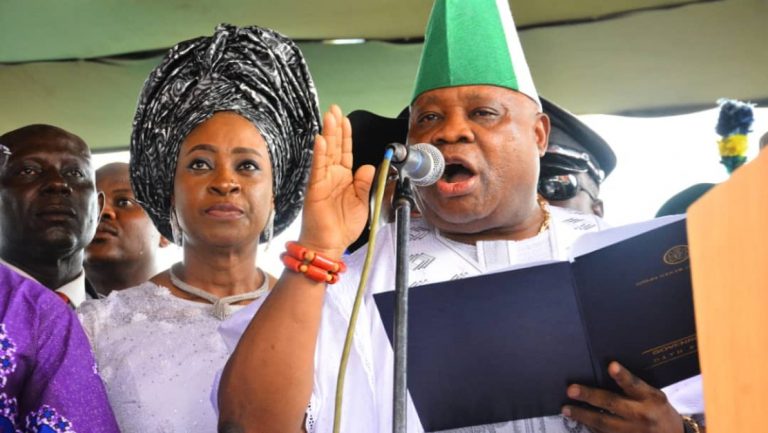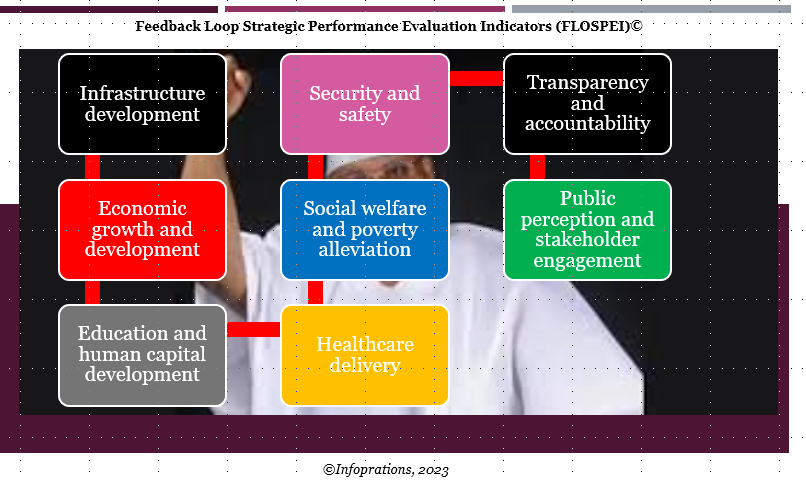
On June 27, 2023, it will be seven months since Senator Ademola Adeleke became governor of Osun State after winning the third most keenly contested election in the history of the state. It will also be one month and 18 days since the Supreme Court finally put the litigation that followed his declaration as the elected governor to rest, having upheld the decision of the Court of Appeal, which struck out the prayer of former governor Gboyega Oyetola. In all, he has been at the helm of leadership for six months, which means he has less than four years to be the governor of the state.
Some days after his inauguration in 2022, pundits and oppositions started evaluating his actions and inactions. Our analysts report that the majority of the evaluations focused on his early decisions regarding the activities that the previous government of Alhaji Gboyega Oyetola planned and executed towards the end of his administration. Some believed that it was too early for Governor Adeleke to take the path of hurriedly ending some programmes and projects of his predecessor.
While debate rages on his actions and inactions towards the growth and development of the state, after several analyses of how the two immediate past governors governed the state for 12 years and benchmarking of regional performance (South-West Governors), our team of public administration and social development analysts develops a strategic performance evaluation framework for measuring governor Ademola Adeleke’s activities in this piece.
Register for Tekedia Mini-MBA edition 18 (Sep 15 – Dec 6, 2025) today for early bird discounts. Do annual for access to Blucera.com.
Tekedia AI in Business Masterclass opens registrations.
Join Tekedia Capital Syndicate and co-invest in great global startups.
Register for Tekedia AI Lab: From Technical Design to Deployment.
This framework, which has eight strategic indicators, can assist state and national media organisations in their efforts to hold the governor accountable based on his electoral promises. The framework is also useful for members of the state and national civic space who have interest in establishing and sustaining an environment for meaningful political, economic, social, and cultural participation.

Feedback Loop Strategic Performance Evaluation Indicators
Our team proposes that both the media and civic space need to follow the path of doing the evaluation every six months. This is premised on existing knowledge, which indicates that yearly performance evaluations, most importantly in the civic space, rarely deliver the desired results for the stakeholders. Therefore, when evaluating the administration of Ademola Adeleke every six months, it is important to pay attention to the key elements of his governance stated in each indicator.
Infrastructure Development Assess the progress made in infrastructure development projects such as road construction, transportation systems, water supply, electricity, healthcare facilities, educational institutions, and other critical infrastructure initiatives. Measure the completion of projects, the quality of infrastructure, and the impact on the lives of the people.
Economic Growth and Development Evaluate the administration’s efforts to stimulate economic growth and attract investments to Osun State. Consider indicators such as GDP growth, job creation, business development, industry diversification, promotion of entrepreneurship, and measures to reduce unemployment and poverty levels.
Education and Human Capital Development Examine the administration’s initiatives in improving the quality of education, access to education, and skill development programs. Assess the state of educational institutions, implementation of educational reforms, enrollment rates, teacher training programs, and the integration of technology in education.
Healthcare Delivery Evaluate the administration’s performance in enhancing healthcare services and access to quality healthcare. Consider factors such as the provision of healthcare infrastructure, availability of essential medical supplies and equipment, implementation of healthcare policies, improvement in healthcare outcomes, and initiatives to address public health challenges.
Social Welfare and Poverty Alleviation Assess the administration’s efforts to alleviate poverty and improve the welfare of vulnerable populations. Consider the implementation of social intervention programs, poverty reduction strategies, access to basic amenities, and initiatives targeting women, children, the elderly, and persons with disabilities.
Security and Safety Evaluate the administration’s approach to ensuring the safety and security of citizens and promoting peace within the state. Assess crime rates, law enforcement effectiveness, community policing initiatives, disaster management, and emergency response systems.
Transparency and Accountability Examine the administration’s commitment to transparency, accountability, and good governance. Evaluate the implementation of anti-corruption measures, adherence to financial regulations, citizen engagement and participation, and the effectiveness of mechanisms for monitoring and evaluating government activities.
Public Perception and Stakeholder Engagement Consider public opinion, feedback from stakeholders, and engagement with civil society organizations. Assess the level of public trust, satisfaction with governance, responsiveness to citizen concerns, and the extent to which the administration involves stakeholders in decision-making processes.
Meanwhile, our team is available for strategic engagement on the quantification aspect of the framework.



